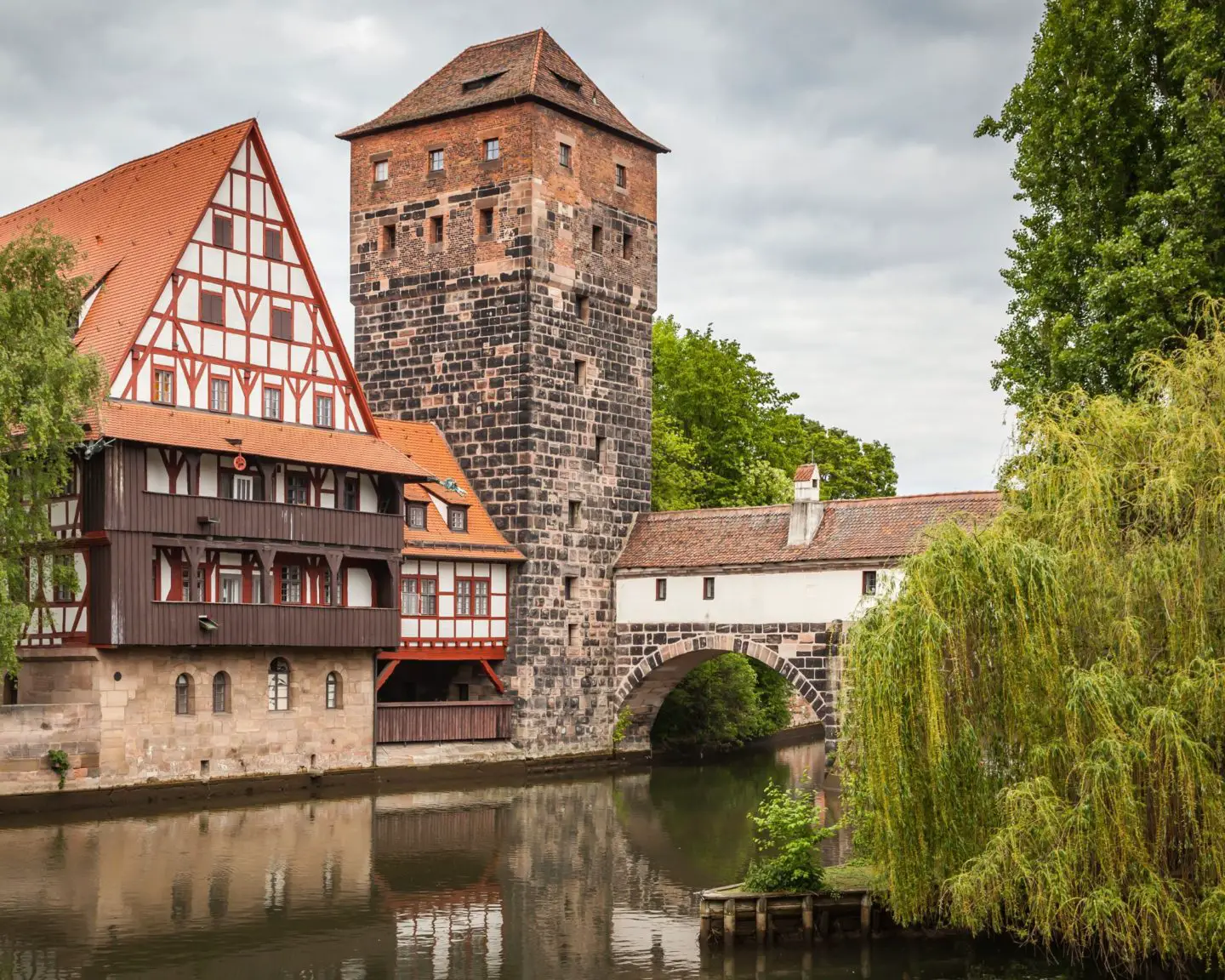
Looking for the best things to do in Nuremberg? Here is the ultimate Nuremberg guide to help you plan a perfect day in one of the most historically rich city located in Bavaria, Germany.
Nuremberg is a city steeped in history and renowned for its significant contributions to culture, art, and politics. With a rich history dating back to the Middle Ages, Nuremberg is famous for several reasons.
It played a pivotal role in the Roman Empire and later served as the site for the infamous Nuremberg Trials, where prominent Nazi leaders were held accountable for their crimes after World War II.
Today, Nuremberg is a captivating blend of the old and the new, boasting well-preserved medieval architecture, including the imposing Nuremberg Castle and the charming Old Town with its picturesque timber-framed houses.
The city is also celebrated for its traditional Christmas Market, one of the most renowned in Europe.
With its historical significance, cultural treasures, and warm hospitality, Nuremberg offers a captivating travel experience for history enthusiasts, culture seekers, and anyone eager to witness a captivating mix of the past and the present.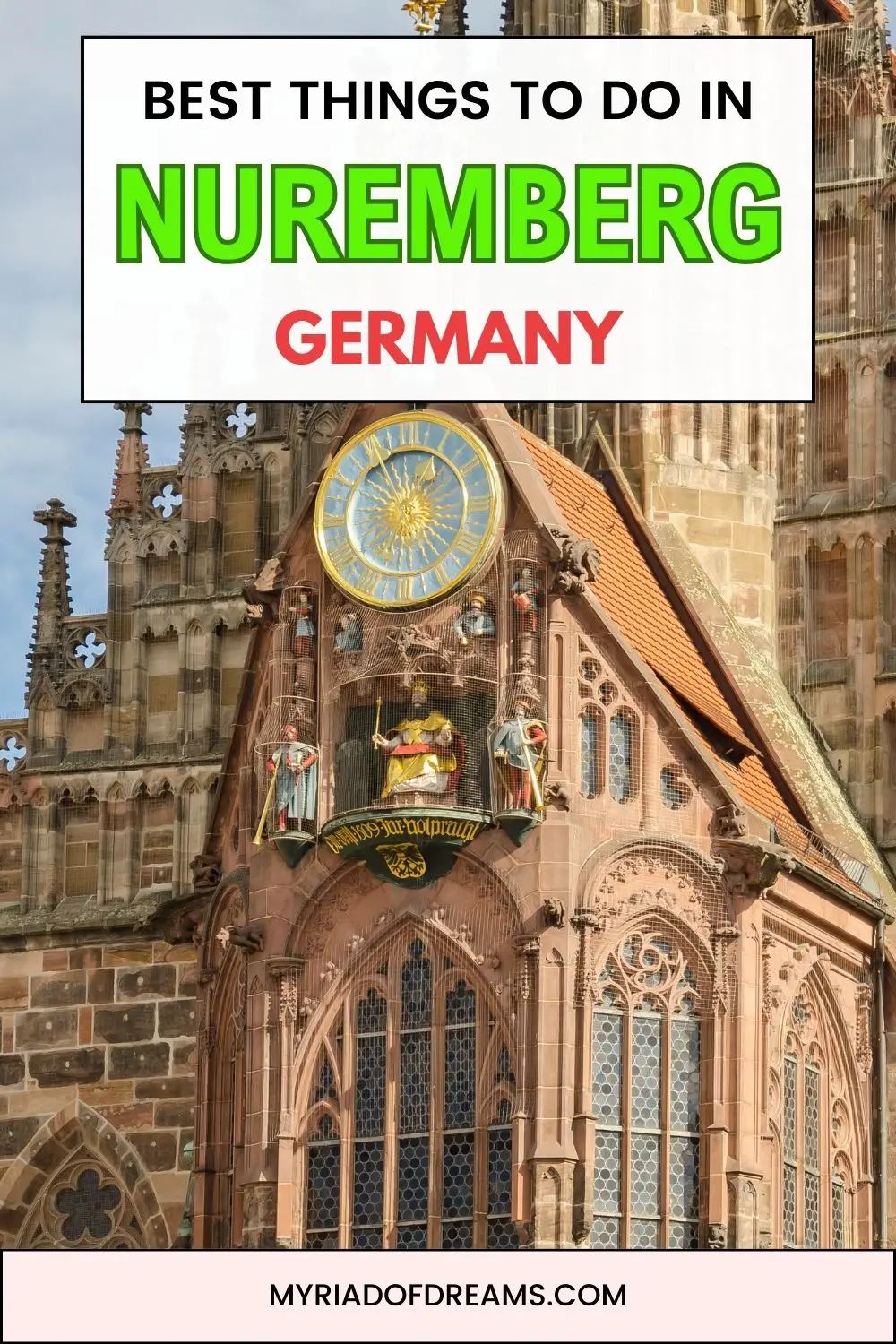
Table of Contents
Best time to visit Nuremberg
Each season offers something unique to explore in the city.
Summer (July to August) in Nuremberg is warm and inviting, with longer daylight hours. This season is ideal for exploring outdoor attractions, attending festivals, and enjoying open-air concerts and events. However, keep in mind that it can get crowded during peak tourist season.
Whereas winter (December to February) is a popular time to visit if you enjoy festive atmospheres and holiday traditions. The city’s cozy ambiance and charming Christmas decorations create a magical experience.
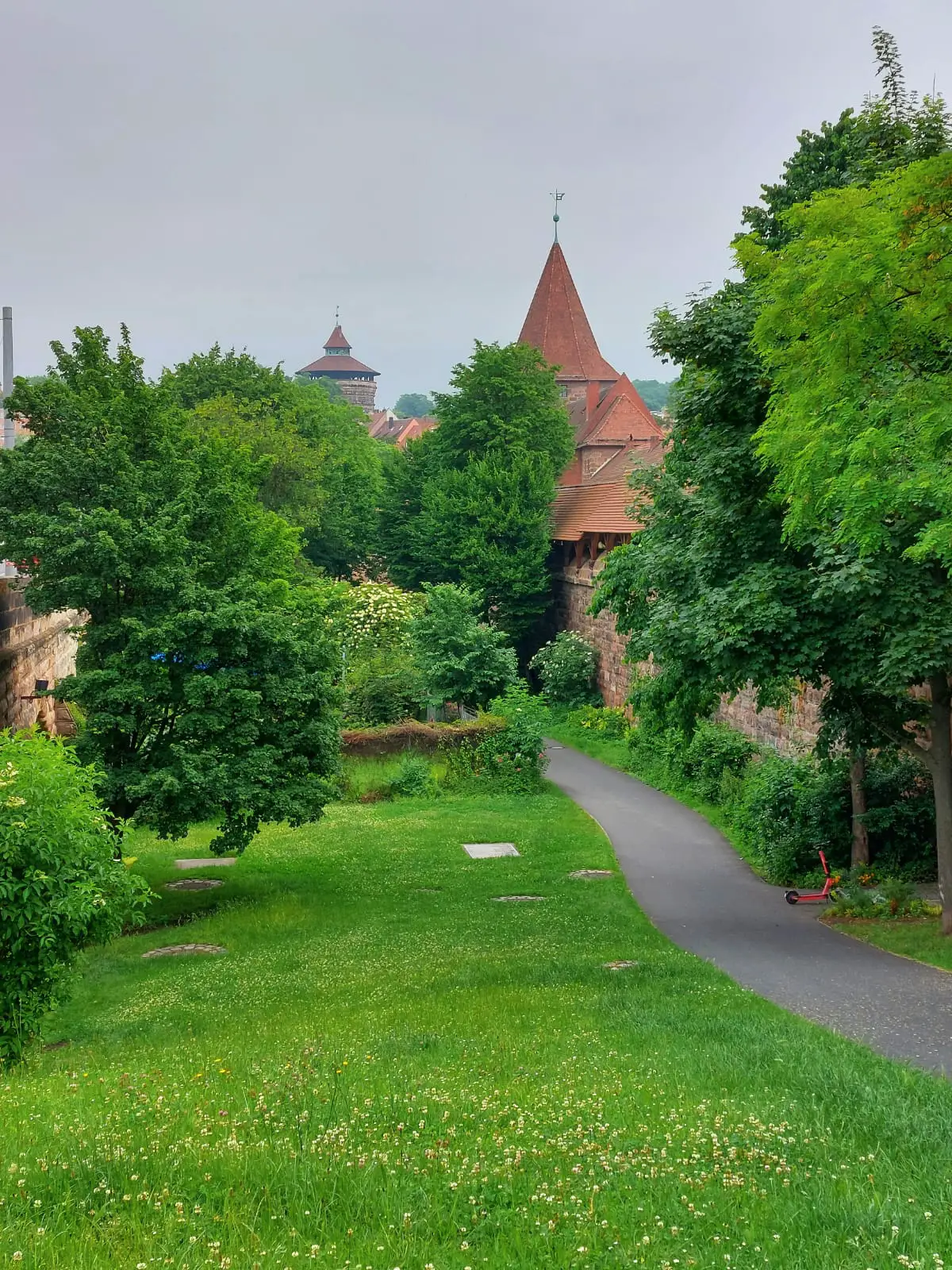
Spring (April to June) and Autumn (September to October) is a lovely time to visit Nuremberg when the weather is mild and pleasant. It is a great time for leisurely strolls and outdoor activities without the bustling crowds.
Ultimately, the best time to visit Nuremberg depends on your interests and whether you prefer to explore the city during its lively seasons or enjoy a more serene and quiet atmosphere.
Top things to do in Nuremberg
Nuremberg Castle
Visiting Nuremberg Castle is an absolute must during your trip to this charming German city. Steeped in history and perched atop a hill, the castle offers not only a breathtaking view of Nuremberg’s skyline but also an opportunity to step back in time and immerse yourself in centuries of rich heritage.

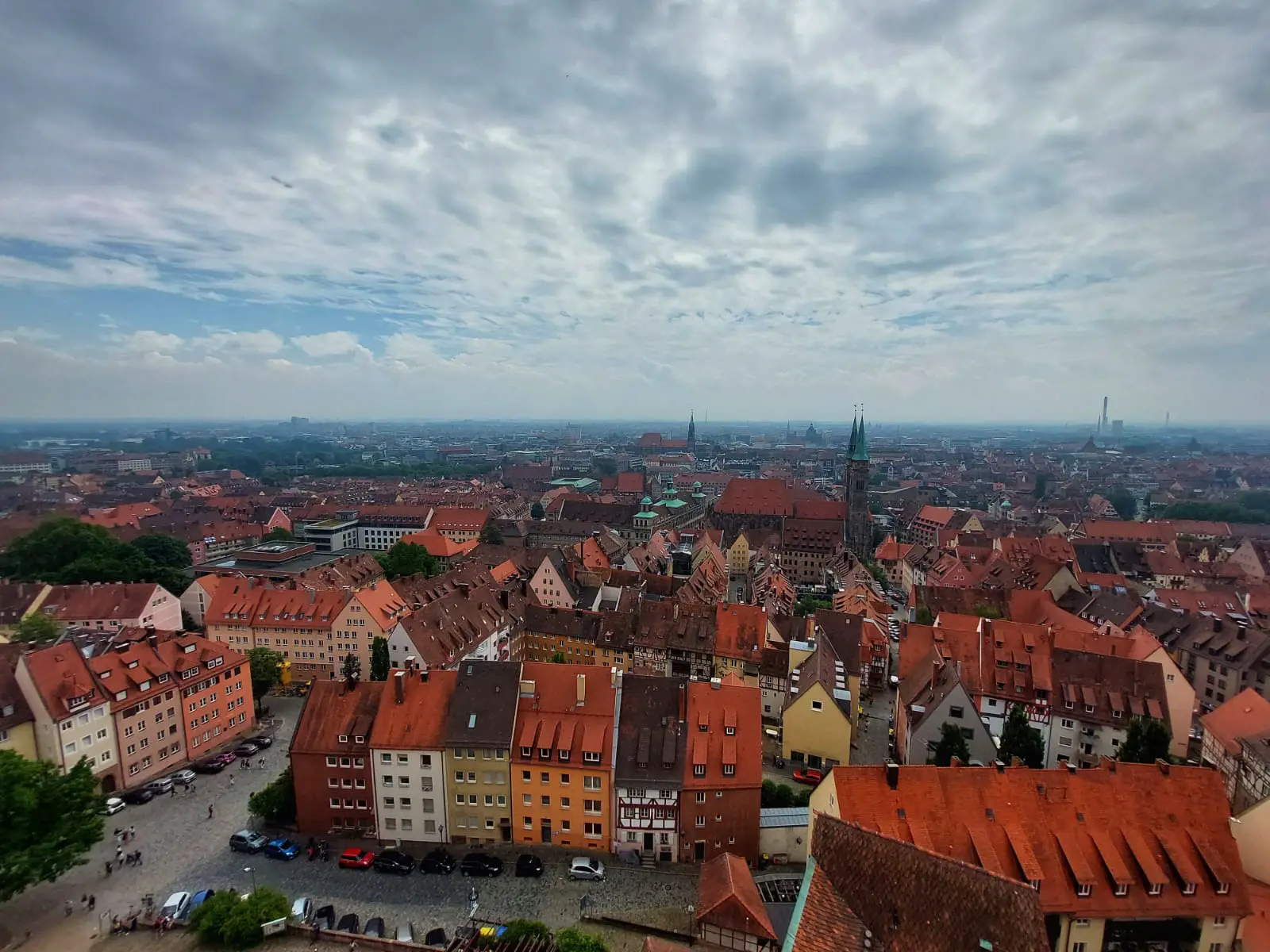
Upon entering the castle grounds, you can visit the Kaiserburg Museum, which showcases an impressive collection of historical artifacts, including armor, weaponry, and regal items from the Holy Roman Empire era.
Don’t miss the Sinwell Tower, which provides a remarkable panoramic view of Nuremberg, perfect for photo enthusiasts.
St. Lorenz Church
This medieval masterpiece, dating back to the 13th century, showcases stunning Gothic architecture and intricate stone carvings.
One remarkable detail about its exterior is the magnificent Rose Window, a large circular stained glass window adorned with delicate tracery, adding to the church’s captivating charm.
Inside, you’ll find awe-inspiring stained glass windows and beautiful sculptures.
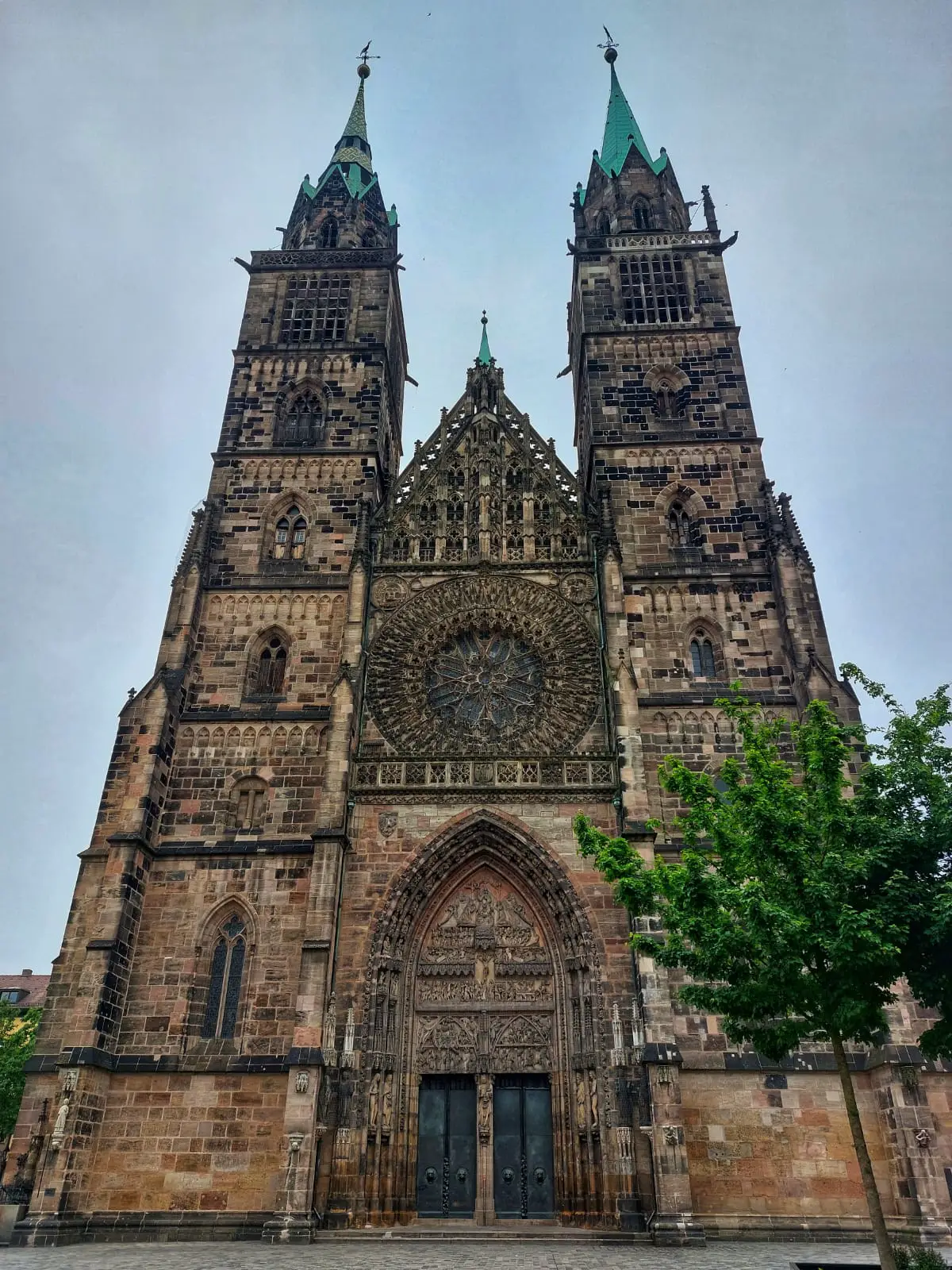
For history and art enthusiasts, St. Lorenz Church is a treasure trove of fascinating artifacts and relics. Don’t forget to visit the Lorenzkirche Museum, where you can learn more about the church’s history and view various religious artifacts dating back centuries.
Finally, if you happen to be in Nuremberg during the summer, attending one of the concerts or musical performances hosted at St. Lorenz Church is an experience not to be missed. The acoustics within the church create a unique and unforgettable setting for live music.
Frauenkirche and Schöner Brunnen
Hauptmarkt is the main square and a bustling hub where you can find Frauenkirche and Schöner Brunnen.
In winters you can also explore the renowned Nuremberg Christmas Market and sample local delicacies at the Hauptmarkt.
Frauenkirche, the Church of Our Lady, is a stunning Gothic church with an awe-inspiring interior and a unique, two-story pulpit.
If you are around the church at noon, you can witness the charming puppet show called “Männleinlaufen.”
This enchanting spectacle features rotating figurines representing Holy Roman Emperor Charles IV and seven electors. As the clock strikes 12, the puppets reenact the homage paid to Charles IV in 1356, offering a captivating cultural experience.
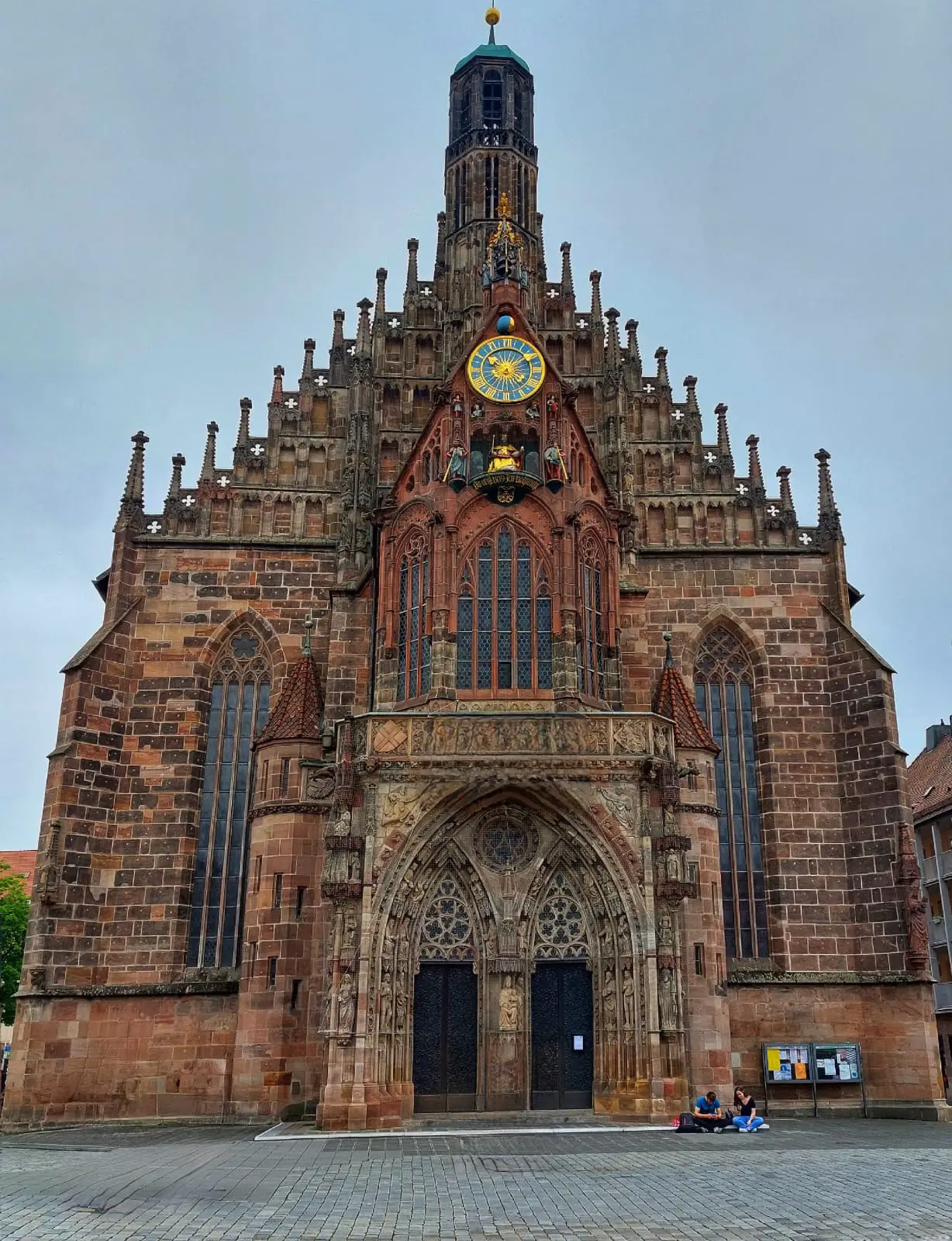
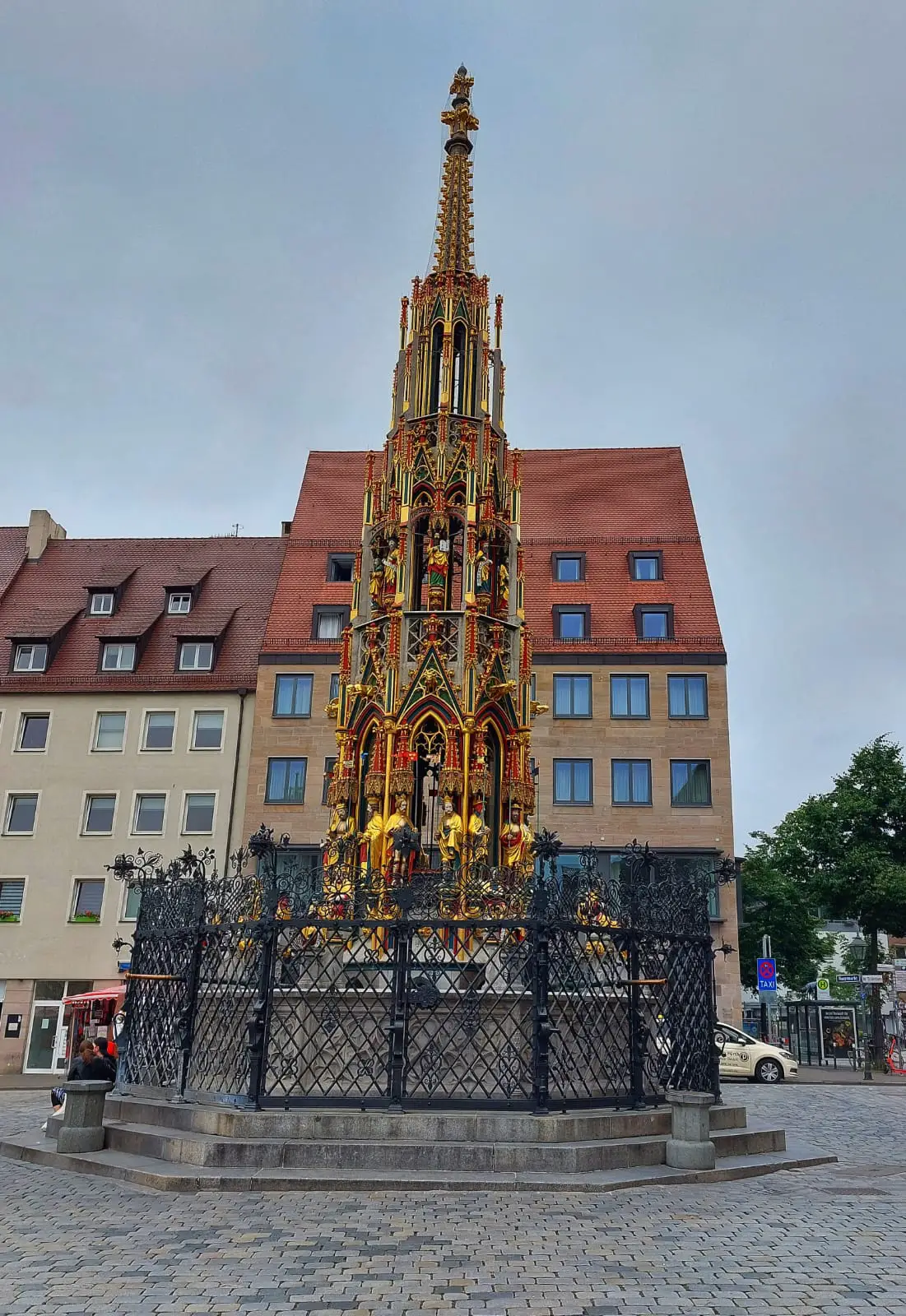
In front of the church, at Hauptmarkt’s heart stands the Schöner Brunnen, a beautiful 14th-century fountain adorned with intricate sculptures and a golden ring.
Legend has it that spinning the ring brings good luck. Its ornate spire, crowned with the “Four Virtues” statues, celebrates beauty, wisdom, justice, and strength.
Henkersteg and Weinstadel
Henkersteg, or the Hangman’s Bridge, is a historic footbridge that connects the Old Town with Weinstadel, an area known for its half-timbered houses and vineyards.
The significance lies in the bridge’s association with the city’s dark past, as it was once used to transport prisoners to the executioner’s tower.
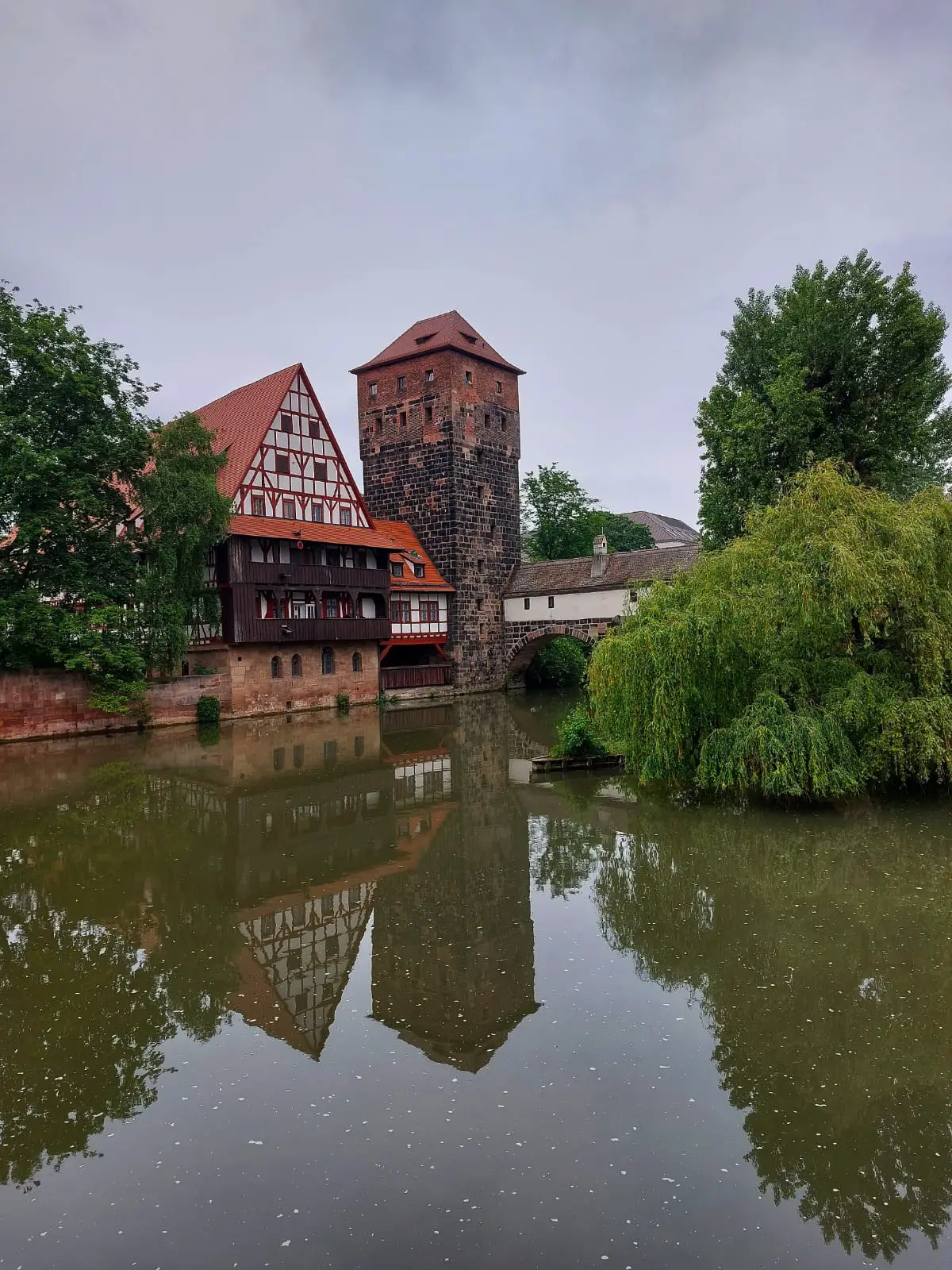
Today, the bridge offers a scenic stroll with panoramic views of the Pegnitz River and the surrounding historic buildings.
Weinstadel, on the other hand, provides a tranquil setting to savor local wines and experience the ambiance of a bygone era.
Documentation Center
Visiting the Documentation Center Nazi Party Rally Grounds in Nuremberg is an important and sobering experience that delves into the history of the Nazi regime.
The center is housed in the Congress Hall, an unfinished monumental building designed by the Nazis for their party rallies.
It serves as a memorial to the victims and a reminder of the consequences of totalitarianism and hatred.
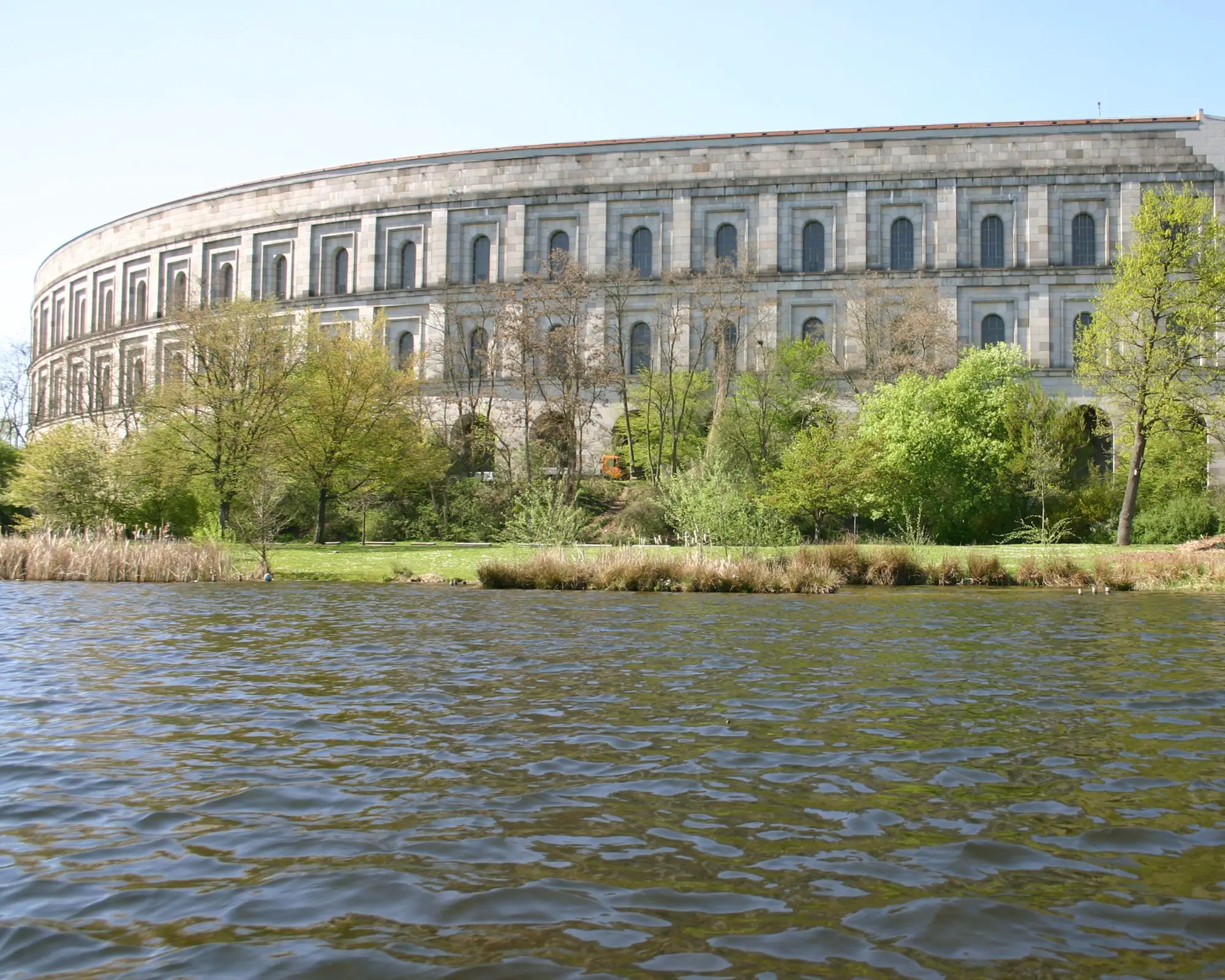
The imposing Congress Hall stands as a stark contrast to the somber exhibits inside, creating a powerful impact on visitors.
A visit here is an opportunity to confront the darker chapters of history and pay tribute to the victims while recommitting to the principles of peace, tolerance, and human rights.
Dozenteich
Located within walking distance from the Documentation Center, Dozenteich is an ideal place to unwind after a thought-provoking visit.
This serene and picturesque lake, though artificial, offers a peaceful oasis amidst the city’s historical landmarks.
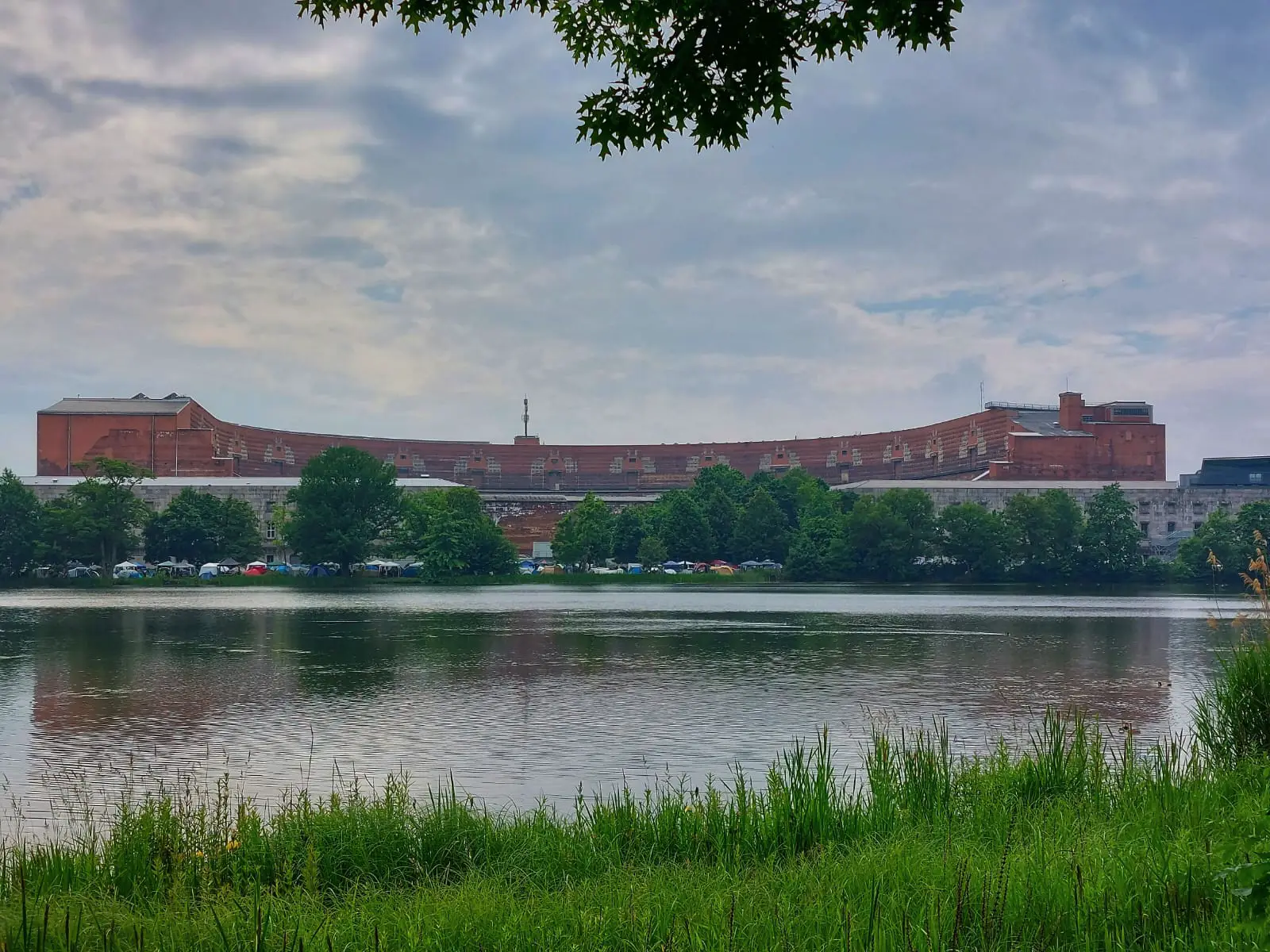
You can enjoy leisurely boat rides on the lake’s calm waters or simply relax with family and friends, savoring the serene atmosphere and beautiful scenery.
Weissgerbergasse
The street’s name “Weissgerbergasse” translates to “White Tanner’s Lane,” reflecting its association with the leather industry.
This narrow cobblestone street, nestled in the heart of the Old Town, was once home to tanners, dyers, and leather craftsmen during the Middle Ages.
Today, Weissgerbergasse is a picturesque attraction, lined with quaint shops, cafes, and art galleries.

It offers a delightful escape from the bustling city life and a chance to immerse yourself in the ambiance of a bygone era.
The street’s historical importance, combined with its photogenic charm, makes it a must-visit destination for history enthusiasts and photographers.
Albrecht Dürer House and Monument
Albrecht Dürer was a master painter, printmaker, and theorist whose works had a profound impact on the art world.
His residence-turned-museum showcases his original tools, artwork, personal belongings, various rooms, including his studio and living quarters.

Adjacent to the Albrecht Dürer House, the Albrecht Dürer Monument stands tall in the historic square.
The bronze statue pays homage to the artist, capturing his likeness and holding a drawing board and brush, symbolizing his artistic prowess.
Handwerkerhof
The Handwerkerhof (Craftsman’s Courtyard) is a delightful enclave of artisanal workshops, craft stores, and quaint eateries.
This hidden gem holds immense significance as it celebrates and preserves the traditional crafts and trades that were once the heart of Nuremberg’s economy and culture.
Visiting Handwerkerhof is like stepping back in time to a charming medieval village within the bustling city.
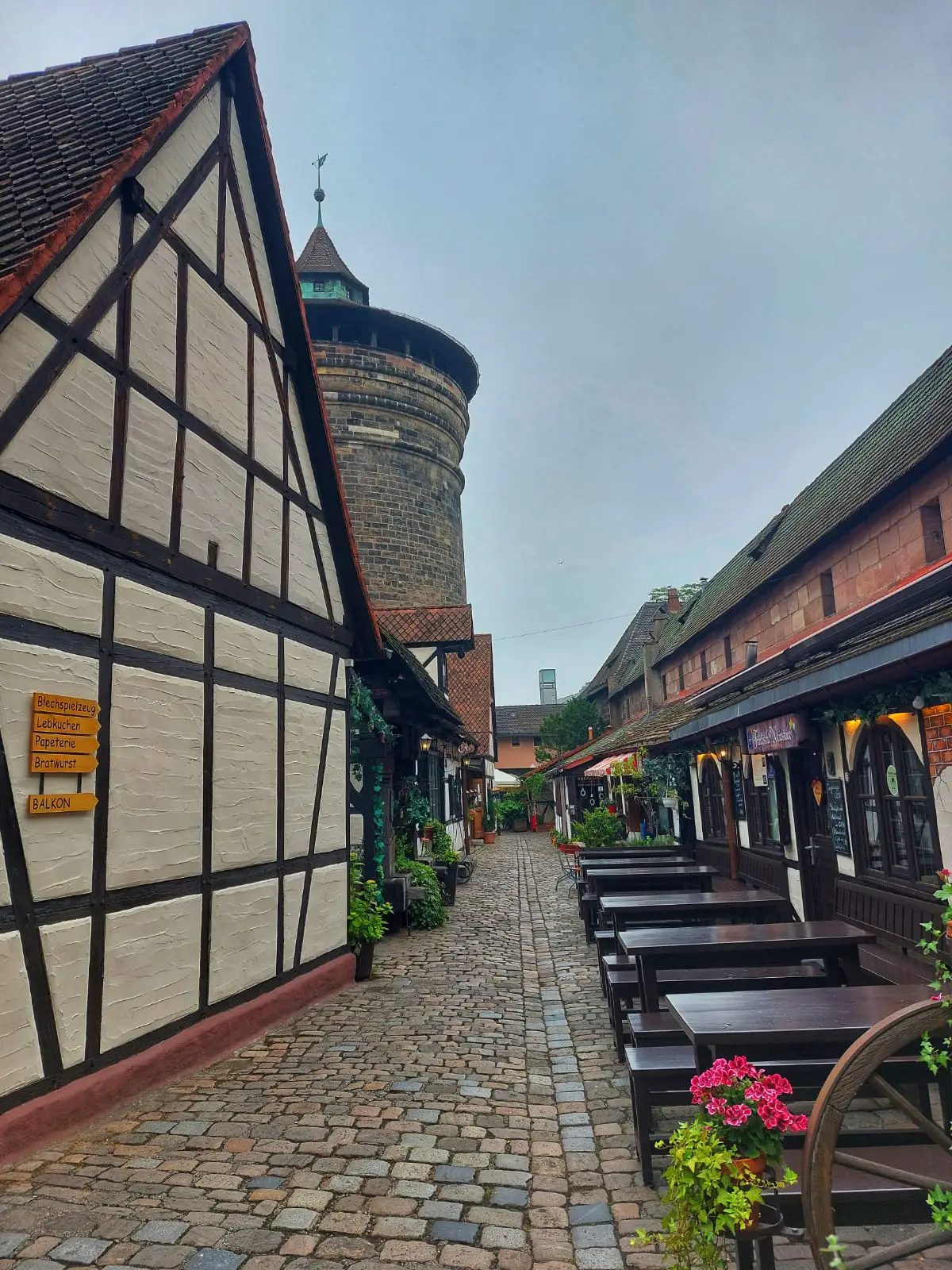
The cobblestone pathways and half-timbered houses evoke a nostalgic ambiance.
It is an ideal spot to shop for handmade souvenirs, savor local delicacies, and interact with skilled artisans.
Heilig-Geist-Spital
This historic complex, founded in the 14th century, is a remarkable example of medieval architecture and serves as a living testament to Nuremberg’s commitment to caring for its citizens throughout the ages.
The highlight of Heilig-Geist-Spital is its beautiful courtyard, surrounded by well-preserved half-timbered buildings that house charming shops and restaurants.
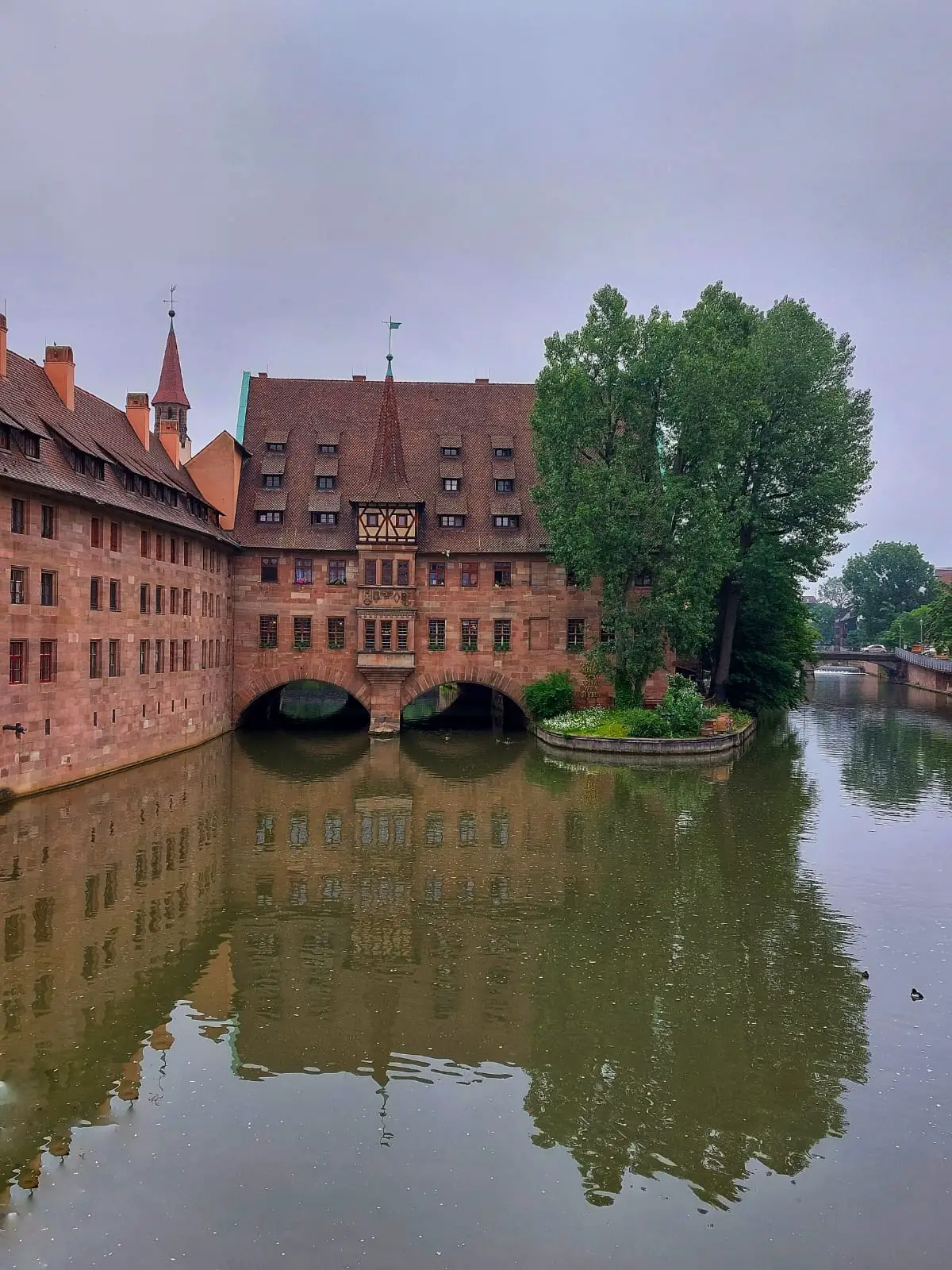
Here, you can savor traditional Franconian cuisine and shop for authentic souvenirs.
Moreover, the hospital’s museum showcases historical artifacts and medical instruments, giving you insight into healthcare practices of yesteryears.
Obere Karlsbrucke
This historic bridge, dating back to the 14th century, crosses the Pegnitz River and connects the Old Town with the district of St. Sebald.
The bridge’s iconic red sandstone arches and intricate stone carvings add to its allure.

Moreover, the bridge’s central location makes it a perfect starting point to explore the city’s many attractions, including the Nuremberg Castle, St. Sebaldus Church, and the Albrecht Dürer House.
St. Sebaldus Church
This awe-inspiring medieval church, named after the city’s patron saint, St. Sebaldus, showcases a fascinating blend of Gothic and Romanesque styles.
Moreover, the church’s imposing exterior, with its twin towers and impressive facade, creates a striking presence in Nuremberg’s skyline.
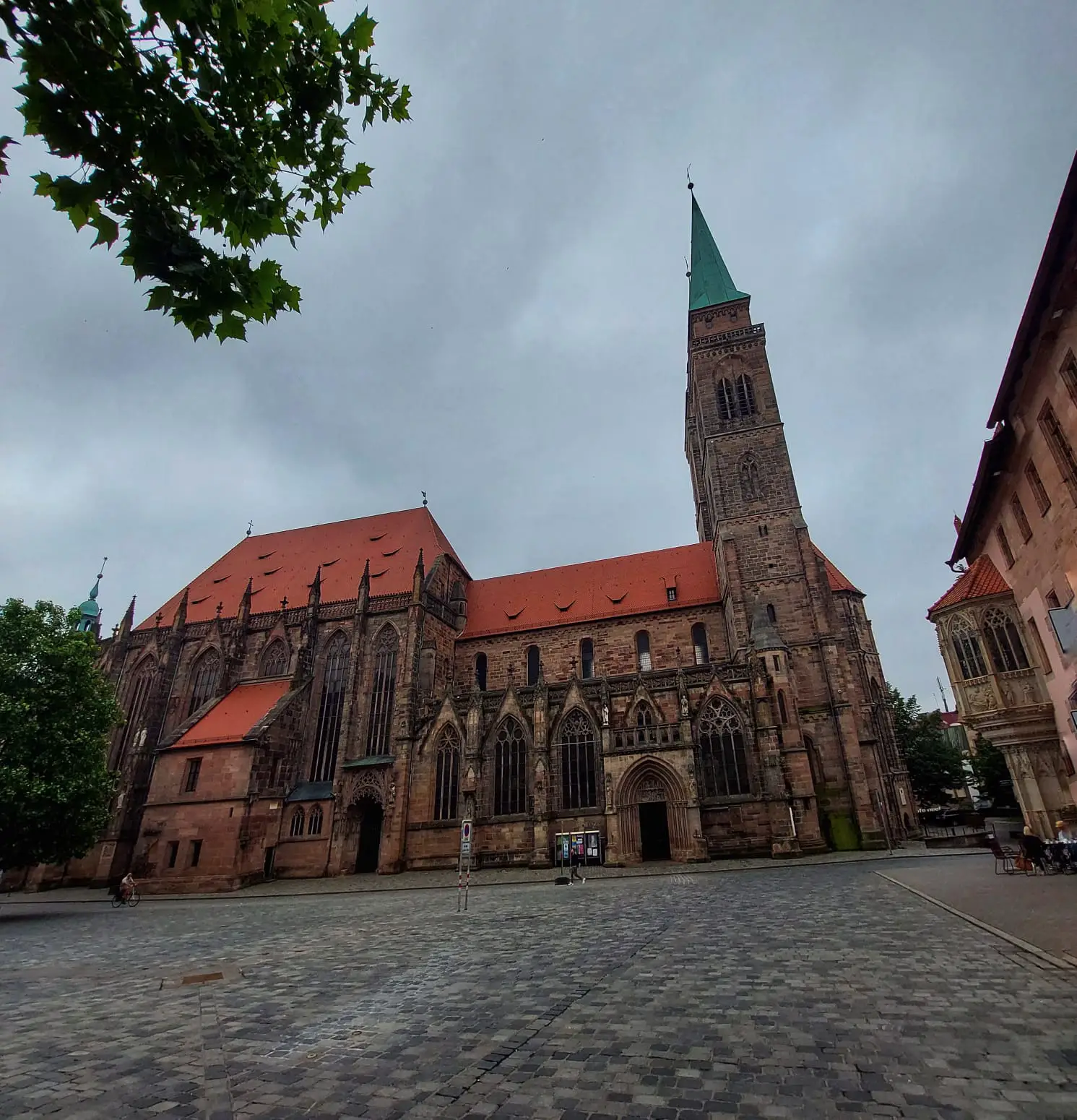
The peaceful courtyard surrounding the church offers a serene escape from the bustling city.
Inside, you’ll be captivated by the intricate stained glass windows, ornate altars, and magnificent sculptures, including the Shrine of St. Sebaldus.
St. Elizabeth and St. Jakob Church
St. Elizabeth Church, is a beautiful example of Gothic architecture, whereas St. Jakob Church, on the other hand, showcases a magnificent blend of late Gothic and early Renaissance styles.
Both churches have witnessed significant historical events and served as important places of worship for centuries.
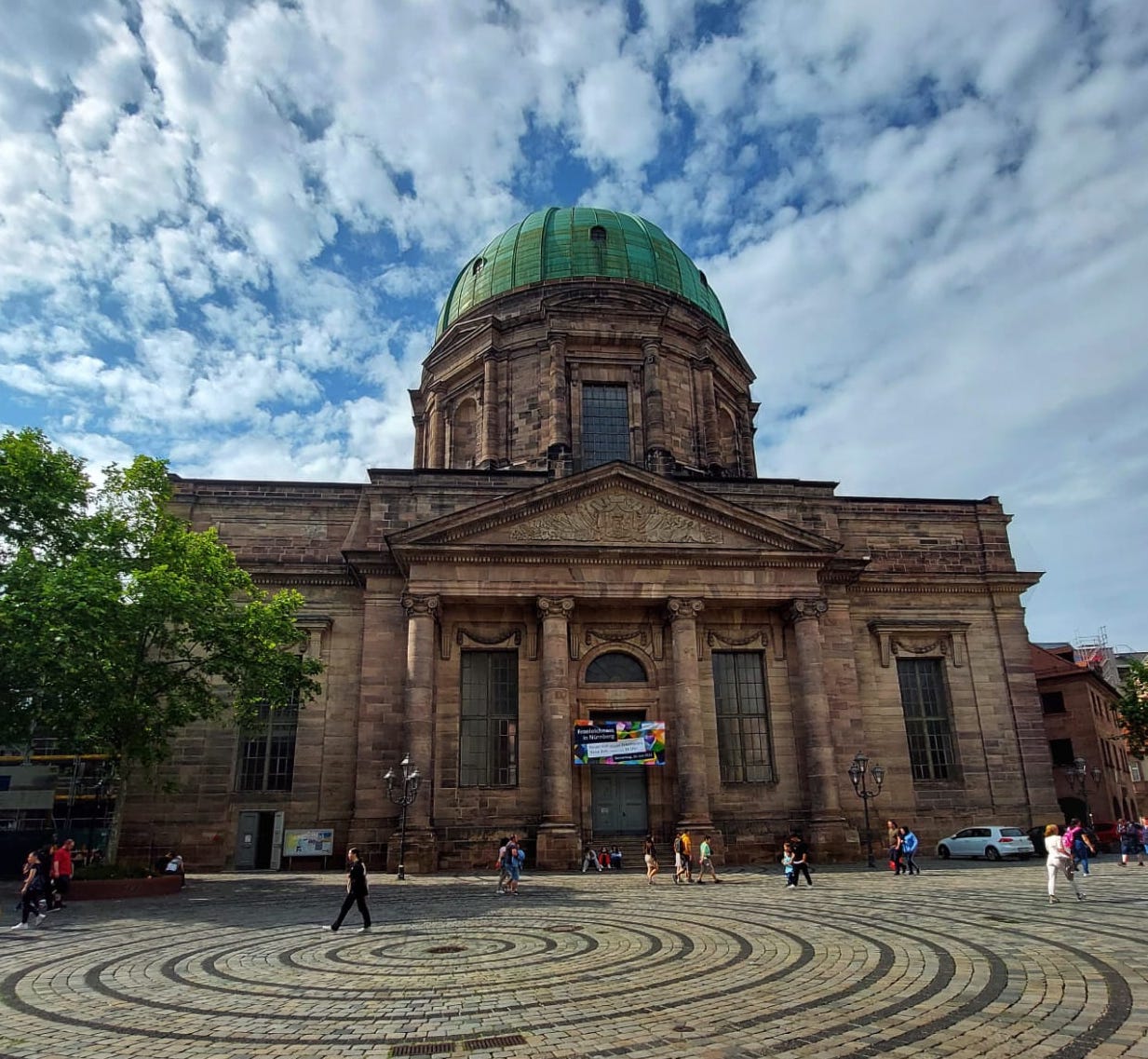
Visiting St. Elizabeth and St. Jakob Churches is an opportunity to soak in the city’s spiritual atmosphere, admire its architectural gems, and gain a deeper understanding of the cultural and religious heritage that shapes Nuremberg’s identity.
Where to eat in Nuremberg
Whether you seek traditional flavors or international cuisine, the city has something for everyone. Here are some well-loved dining spots in Nuremberg to tantalize your taste buds.
Bratwurst Glöcklein : It is renowned for Nuremberg sausages (bratwurst) and traditional Franconian dishes. Here you can indulge in the authentic flavors of the region with a selection of delicious bratwurst and other local specialties.
Albrecht-Dürer-Stube: It is a popular choice for its rustic ambiance and authentic Franconian cuisine. Here you can enjoy delectable roasted meats, savory stews, and regional specialties.
Katzenempel : It is a cat café, offering a unique experience for cat lovers. Enjoy beverages and snacks while interacting with resident cats in a cozy environment.
Vegan food in Nuremberg
Nuremberg has a growing vegan food scene, and you’ll find several restaurants and eateries that cater to plant-based diets. Here are some places to enjoy vegan food in Nuremberg.
Yummy Veggie: It is a vegetarian and vegan-friendly eatery. They offer delicious range of plant-based meals with a focus on local and organic ingredients, offering a delightful dining experience for vegans and vegetarians alike.
Bodhi Vegan Kitchen: It is a delightful spot for Asian-inspired vegan cuisine. Here you can find a variety of flavorful dishes such as sushi rolls, noodle soups, and dumplings, offering a scrumptious and satisfying experience for plant-based food enthusiasts.
Veganbar: It is a go-to destination for fast and tasty vegan food. It is a great place to enjoy a selection of vegan burgers, hot dogs, wraps, and sweet treats like vegan ice creams.
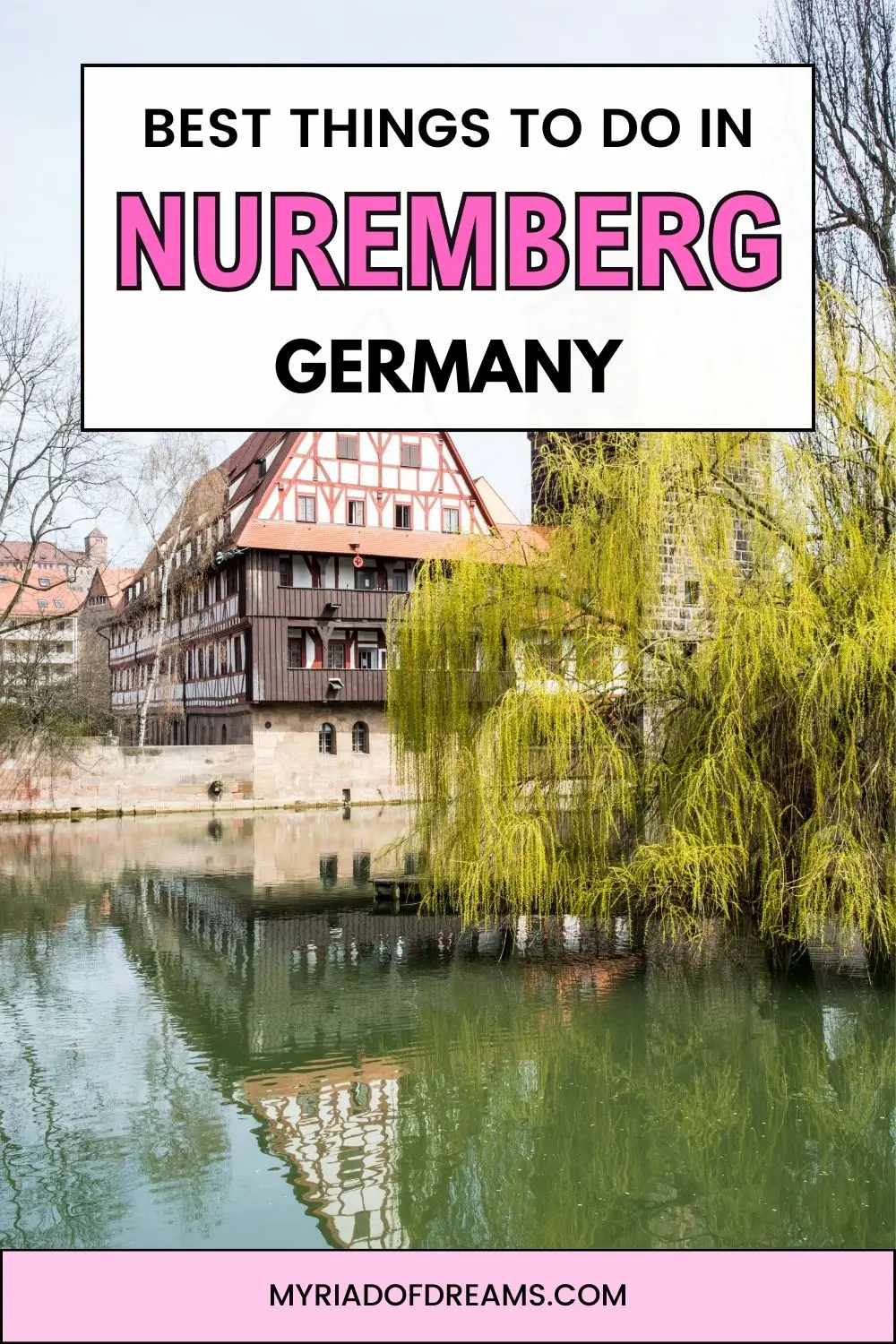
You may also like:
Neuschwanstein Castle :Day trip from Munich
2 Days Salzburg Itinerary : Best of Salzburg in 2 Days
Best things to do in Bamberg – One day in Bamberg, Germany
